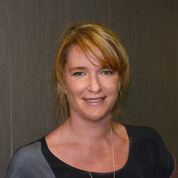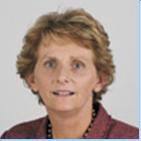Central Auckland > Public Hospital Services > Te Whatu Ora – Health New Zealand Te Toka Tumai Auckland >
Women's Health - Gynaecology | Auckland | Te Toka Tumai | Te Whatu Ora
Public Service, Obstetrics and Gynaecology
Description
Formerly Auckland DHB Women's Health - Gynaecology
The general gynaecology service provides care to women living in the Auckland DHB catchment of Central Auckland. National Women’s Health is also a major centre for Gynaecology Oncology, Urogynaecology and Fertility patients.
The service comprises:
- One inpatient ward (Ward 97) at Auckland City Hospital (ACH)
- Women’s Assessment Unit (WAU) at ACH for both Gynaecology and Obstetric patients
- Day surgery at Greenlane Clinical Centre (GCC)
- Outpatient services at GCC including:-
- General and Specialty Gynaecology Clinics
- Early Pregnancy Assessment Unit
- Epsom Day Unit providing first trimester termination service
- Colposcopy.
District Services
- Secondary gynaecology, including menstrual disorders, pelvic floor dysfunction endometriosis, pelvic pain and sterilisation
- Colposcopy and treatment of cervical and vulvo-vaginal epithelial abnormalities
- Management of miscarriage and pregnancy failure
- Complex hormone replacement therapy and family planning
- Vasectomy consultation and procedures.
- Contraception clinic
Regional Services
- First and second trimester termination of pregnancy
- Fertility services – Fertility Plus is one of three providers in the Auckland region. Services include reproductive endocrinology
- Recurrent pregnancy loss diagnosis and management
- Gynaecology Oncology
- Vulval clinic provides an extended regional service for all vulval disorders. There are 3 centres in New Zealand – Auckland, Wellington and Christchurch
- Female Multidisciplinary Clinics.
Wards and Clinics in the Gynaecology Service
Inpatient Services – Ward 97, Auckland City Hospital
Gynaecology inpatients is a 22 bed ward providing care for women with acute gynaecology problems, preoperative and postoperative care for General Gynaecology, Gynaecology Oncology and women following breast surgery . It also provides care to women with early pregnancy complications and medical terminations of pregnancy up to 20 weeks gestation.
The service has access to the ACH Level 8 High Dependency Unit (HDU) and the Critical Care Unit for those women requiring a higher level of care and monitoring.
Outpatient Clinics
The Gynaecological Outpatient Clinics are held at the Greenlane Clinical Centre and include:
- General Gynaecology (i.e. menstrual disorders, pelvic floor dysfunction, sterilisation)
- Contraception Clinic
- Hormone replacement therapy and family planning
- Endometriosis and pelvic pain
- Urogynaecology
- Pre-admissions clinic
- Colposcopy
- Gynaecology Oncology
Long Acting Contraceptive Clinic (LARC)
Free contraceptive service to all women living within ADHB. We offer an initial consultation and assessment and a range of contraceptives. We also offer pregnancy testing, STI testing and cervical screening.
Call 0800 527200 for enquiries or to book an appointment. If you need to, please leave a message and your contact phone number for us to get back to you.
Visit the National Women's Health website for more information.
Epsom Day Unit (EDU)
Epsom Day Unit (EDU) is the Auckland Regional Service for first trimester terminations (up to 12.6 weeks on day of referral) of pregnancy. The boundary for the Auckland region is from Mercer in the south to Warkworth in the north.
Referral to EDU is made by a General Practitioner (GP), from a Family Planning Clinic, or self-referral by women. The appointment is made by telephone with the scan and referral letter sent through to the clinic. GPs and FPA clinics are aware of referral criteria to the clinic.
EDU provides a two-day service and it is important that women are aware of this before coming to the clinic.
Call (09) 631 0740 for enquiries.
Visit the National Women's Health website for more information.
Fertility Plus
NWH Fertility Plus offers a range of secondary and tertiary reproductive endocrinology, infertility and sub-fertility services to the women of the Northern Region. Fertility Plus is one of three public providers in the Auckland region. Private investigation and treatment is also available. Fertility is accredited by the Australasian Reproductive Technologies Accreditation Committee.
Publicly funded fertility treatment is available to women under 40 years of age, who are non-smokers and have a BMI under 32. If couples do not meet the criteria for publicly funded fertility treatment, private treatment is available.
Email for enquiries.
Visit the National Women's Health website for more information.
Early Pregnancy Assessment Unit (EPAU)
EPAU is a nurse-led outpatient service, with access to a pregnancy loss counsellor and medical support. This service is based at GCC and provided for women referred for the management of early pregnancy complications, including miscarriage, ectopic and molar pregnancy. Women are offered the options of Conservative (no intervention), Medical or Surgical management of miscarriage.
Gynaecology Oncology
NWH is the regional service provider for surgical gynaecology oncology, providing services to CMDHB, WDHB and Northland. An extended regional surgical service is offered to Gisborne, Waikato and the Bay of Plenty. This service has a close association with Blood and Cancer Services of ACH (chemotherapy and radiation therapy services).
Visit the National Women's Health website for more information.
Women’s Assessment Unit (WAU)
This service is open 24 hours a day, 7 days a week and provides acute care for women experiencing pregnancy and gynaecological complications.
If an acute situation occurs and assessment is required immediately, a woman will be referred to the Women’s Assessment Unit by her General Practitioner. In WAU the patient will be seen by the Gynaecology on-call team to determine the most appropriate mode of treatment and the necessary investigations will be carried out.
Women's Health Pain Clinic
Please visit the National Women's Health website for more information
nationalwomenshealth.adhb.govt.nz
Consultants
Note: Please note below that some people are not available at all locations.
-

Dr Khaldoun Aweidah
Gynaecologist
Available at all locations.
-

Dr Philip Beattie
Obstetrician & Gynaecologist
Available at all locations.
-

Dr Carolyn Bilbrough
Obstetrician & Gynaecologist with a special interest in Urogynaecology
Available at all locations.
-

Dr Kira Brent
Gynaecologist
Available at all locations.
-

Dr Astrid Budden
Obstetrician & Gynaecologist
Available at all locations.
-

Dr Marian Carter
Obstetrician & Gynaecologist
Available at all locations.
-

Dr Tin Chiu
Gynaecologist
Available at all locations.
-
Dr Elizabeth Curr
Obstetrician & Gynaecologist
Available at all locations.
-

Dr Tim Dawson
Obstetrician & Gynaecologist, Urogynaecology subspecialty
Available at all locations.
-

Dr Lois Eva
Consultant Gynae Oncologist
Available at all locations.
-

Professor Cindy Farquhar
Gynaecologist
Available at all locations.
-

Dr Sarah Fitzgibbon
Gynaecologist
Available at all locations.
-

Dr Deralie Flower
Gynaecologist
Available at all locations.
-

Dr Gillian Gibson
Gynaecologist
Available at all locations.
-
Dr Mahesh Harilall
Obstetrician & Gynaecology
Available at all locations.
-

Dr Valeria Ivanova
Gynaecologist
Available at all locations.
-

Dr Harriet Kennedy
Dermatologist
Available at all locations.
-

Dr Jennifer McDougall
Clinical Director of Gynaecology
Available at all locations.
-

Dr Katherine McKenzie
Obstetrician & Gynaecologist
Available at all locations.
-

Dr Kirsten McSweeny
Gynaecologist
Available at all locations.
-

Dr Stella Milsom
Physician & Endocrinologist
Available at all locations.
-

Dr Saman Moeed
Gynaecologist
Available at all locations.
-
Dr Cindy Ooi
Gynaecologist
Available at all locations.
-

Dr Sunil Pillay
Obstetrician & Gynaecologist
Available at all locations.
-

Dr Shelley Reilly
Obstetrician & Gynaecologist
Available at all locations.
-

Dr Martin Sowter
Obstetrician & Gynaecologist with a subspeciality in Fertility
Available at all locations.
-

Dr Michelle Wise
Obstetrician & Gynaecologist
Available at all locations.
-

Dr Tze Wong
Gynaecologist
Available at all locations.
-

Dr Michael Wynn-Williams
Gynaecologist
Available at Auckland City Hospital
Referral Expectations
Referrals to the service are triaged by NWH gynaecologists so that patients are seen at the most appropriate clinic and in a timely way. Referrals can be urgent/acute or non-acute and may be from a General Practitioner (GP), from other hospitals in the region, or internally within Auckland City Hospital itself.
Urgent Referrals - If the problem requires immediate assessment, the patient is referred acutely to the Women’s Assessment Unit (as above).
Non-Urgent Referral - the GP requests an outpatient appointment with a gynaecologist and the patient is placed on the waiting list. Waiting times for different clinics vary, depending on the medical condition.
Fees and Charges Description
Gynaecology services are free for New Zealand citizens/residents. Those that are not eligible for publicly-funded services, i.e. non-residents, can phone the Finance Department on (09) 638 0420 to find out the cost of services.
Proof of eligibility for free healthcare will be required (by all) at the first appointment e.g. New Zealand passport and/or a passport of country of origin with current working or residency visas for New Zealand.
Common Conditions / Procedures / Treatments
Click on the following link for patient information about abortion/termination of pregnancy at National Women's Health. You must bring a photo ID on Day 1 of your appointment. Failing to do so will result in rescheduling of appointments.
Click on the following link for patient information about abortion/termination of pregnancy at National Women's Health. You must bring a photo ID on Day 1 of your appointment. Failing to do so will result in rescheduling of appointments.
Click on the following link for patient information about abortion/termination of pregnancy at National Women's Health.
You must bring a photo ID on Day 1 of your appointment. Failing to do so will result in rescheduling of appointments.
Cervical dysplasia is the growth of abnormal cells around the cervix (entrance to the uterus). Although this condition is not cancer there is a small risk that these cells could become cancerous. Sometimes no treatment is needed as the condition may improve by itself. For more severe dysplasia, treatment involves removing the abnormal cells by freezing, laser therapy (a tiny beam of light) or electrical burning. Whether you have treatment or not, you should have more frequent Pap smears in the future.
Cervical dysplasia is the growth of abnormal cells around the cervix (entrance to the uterus). Although this condition is not cancer there is a small risk that these cells could become cancerous. Sometimes no treatment is needed as the condition may improve by itself. For more severe dysplasia, treatment involves removing the abnormal cells by freezing, laser therapy (a tiny beam of light) or electrical burning. Whether you have treatment or not, you should have more frequent Pap smears in the future.
Cervical dysplasia is the growth of abnormal cells around the cervix (entrance to the uterus). Although this condition is not cancer there is a small risk that these cells could become cancerous.
Sometimes no treatment is needed as the condition may improve by itself. For more severe dysplasia, treatment involves removing the abnormal cells by freezing, laser therapy (a tiny beam of light) or electrical burning. Whether you have treatment or not, you should have more frequent Pap smears in the future.
A colposcopy is a detailed examination of the cervix (entrance to the uterus) with a specially lit microscope (colposcope). As with a Pap smear, an instrument called a speculum is inserted into the vagina, and then the colposcope is positioned outside the vagina with its light directed on the cervix. A specialist will perform a colposcopy if your Pap smear has shown abnormal or cancerous cells on the cervix. During the colposcopy further samples of tissue (biopsies) are usually removed and examined in the laboratory so the doctor can get a clearer idea of the extent of the abnormal cells. See our website for more information on the Colposcopy Outpatient Service.
A colposcopy is a detailed examination of the cervix (entrance to the uterus) with a specially lit microscope (colposcope). As with a Pap smear, an instrument called a speculum is inserted into the vagina, and then the colposcope is positioned outside the vagina with its light directed on the cervix. A specialist will perform a colposcopy if your Pap smear has shown abnormal or cancerous cells on the cervix. During the colposcopy further samples of tissue (biopsies) are usually removed and examined in the laboratory so the doctor can get a clearer idea of the extent of the abnormal cells. See our website for more information on the Colposcopy Outpatient Service.
A colposcopy is a detailed examination of the cervix (entrance to the uterus) with a specially lit microscope (colposcope). As with a Pap smear, an instrument called a speculum is inserted into the vagina, and then the colposcope is positioned outside the vagina with its light directed on the cervix.
A specialist will perform a colposcopy if your Pap smear has shown abnormal or cancerous cells on the cervix. During the colposcopy further samples of tissue (biopsies) are usually removed and examined in the laboratory so the doctor can get a clearer idea of the extent of the abnormal cells.
See our website for more information on the Colposcopy Outpatient Service.
The endometrium is the name of the tissue that lines your uterus (womb). For more information please visit the Endometriosis Foundation (a support group for women with endometriosis) website or email them on
The endometrium is the name of the tissue that lines your uterus (womb). For more information please visit the Endometriosis Foundation (a support group for women with endometriosis) website or email them on
The endometrium is the lining of your uterus (womb). Endometrial ablation is the surgical removal or destruction of this lining. There are different methods of destroying the endometrium including electricity, laser therapy or freezing. A specialist performs the operation and it is done through the vagina, so there is no need for the abdomen to be cut open. The endometrium will heal leaving scarring, which usually reduces or stops menstrual periods. In women who have very heavy periods (menorrhagia), an endometrial ablation can be done instead of a hysterectomy as it is an easier procedure than a hysterectomy and is quicker to recover from. Endometrial ablation is only performed in women who no longer wish to have children.
The endometrium is the lining of your uterus (womb). Endometrial ablation is the surgical removal or destruction of this lining. There are different methods of destroying the endometrium including electricity, laser therapy or freezing. A specialist performs the operation and it is done through the vagina, so there is no need for the abdomen to be cut open. The endometrium will heal leaving scarring, which usually reduces or stops menstrual periods. In women who have very heavy periods (menorrhagia), an endometrial ablation can be done instead of a hysterectomy as it is an easier procedure than a hysterectomy and is quicker to recover from. Endometrial ablation is only performed in women who no longer wish to have children.
Hormone replacement therapy (HRT) is when female hormones (oestrogen by itself or with progesterone) are given to a woman during or after menopause when the production of oestrogen by the ovaries declines. The hormones can be taken as tablets, implants or skin patches. HRT has become less popular in recent years because a large study in the USA found that long-term use of HRT can increase the risk of some serious diseases, such as breast cancer and blood clots. However, for some women, short-term use of HRT (no more than 3–4 years) can provide relief from symptoms caused by having less oestrogen in their bodies, such as hot flushes and loss of bone density. The risks and benefits of HRT should be thoroughly discussed with a doctor before treatment begins.
Hormone replacement therapy (HRT) is when female hormones (oestrogen by itself or with progesterone) are given to a woman during or after menopause when the production of oestrogen by the ovaries declines. The hormones can be taken as tablets, implants or skin patches. HRT has become less popular in recent years because a large study in the USA found that long-term use of HRT can increase the risk of some serious diseases, such as breast cancer and blood clots. However, for some women, short-term use of HRT (no more than 3–4 years) can provide relief from symptoms caused by having less oestrogen in their bodies, such as hot flushes and loss of bone density. The risks and benefits of HRT should be thoroughly discussed with a doctor before treatment begins.
A hysterectomy is an operation to remove your uterus (womb). Some types of hysterectomies include the removal of other organs as well, and this will depend on the reason for the operation. A hysterectomy is a treatment for many different diseases and conditions and it can be done through the vagina or through a cut in the abdomen. For more information view the Hysterectomy patient booklet.
A hysterectomy is an operation to remove your uterus (womb). Some types of hysterectomies include the removal of other organs as well, and this will depend on the reason for the operation. A hysterectomy is a treatment for many different diseases and conditions and it can be done through the vagina or through a cut in the abdomen. For more information view the Hysterectomy patient booklet.
This is an operation where the cervix (entrance to the uterus) is dilated and a hysteroscope (small lighted mini telescope) is inserted into the uterus through the vagina and cervix so the specialist can see the inside of the uterus. If no cancer is present, a small spoon-like instrument with a long handle, called a curette, is inserted and the lining of the uterus is scraped off and sent to the laboratory for examination. This procedure can be done under a general (you are asleep) or local (you are awake but the area being investigated is numb) anaesthetic.
This is an operation where the cervix (entrance to the uterus) is dilated and a hysteroscope (small lighted mini telescope) is inserted into the uterus through the vagina and cervix so the specialist can see the inside of the uterus. If no cancer is present, a small spoon-like instrument with a long handle, called a curette, is inserted and the lining of the uterus is scraped off and sent to the laboratory for examination. This procedure can be done under a general (you are asleep) or local (you are awake but the area being investigated is numb) anaesthetic.
Infertility is when couples are unable to conceive a baby after one year of trying, or when the woman has been unable to carry a pregnancy to a live birth. Causes of infertility are varied. There are now many treatments available for infertile couples and, in many cases, these treatments will result in a successful pregnancy. Doctors with a special interest and expertise in this area will usually provide the best opportunity for treatment. Local support groups and societies can be of help during the stressful time of having tests and treatment. Visit our website for more information on infertility and how we can help you.
Infertility is when couples are unable to conceive a baby after one year of trying, or when the woman has been unable to carry a pregnancy to a live birth. Causes of infertility are varied. There are now many treatments available for infertile couples and, in many cases, these treatments will result in a successful pregnancy. Doctors with a special interest and expertise in this area will usually provide the best opportunity for treatment. Local support groups and societies can be of help during the stressful time of having tests and treatment. Visit our website for more information on infertility and how we can help you.
The letters IUD stand for Intra Uterine Device. “Intrauterine” means “inside the uterus” (womb). An IUD is a small piece of plastic with copper wire wrapped around it. The Family Planning IUD leaflet can be downloaded below. If you live in the ADHB region, you may be eligible for a free IUD. For more information, visit our website. The IUD - Intra Uterine Device (PDF, 456.5 KB) Family Planning leaflet
The letters IUD stand for Intra Uterine Device. “Intrauterine” means “inside the uterus” (womb). An IUD is a small piece of plastic with copper wire wrapped around it. The Family Planning IUD leaflet can be downloaded below. If you live in the ADHB region, you may be eligible for a free IUD. For more information, visit our website. The IUD - Intra Uterine Device (PDF, 456.5 KB) Family Planning leaflet
The letters IUD stand for Intra Uterine Device. “Intrauterine” means “inside the uterus” (womb). An IUD is a small piece of plastic with copper wire wrapped around it. The Family Planning IUD leaflet can be downloaded below.
If you live in the ADHB region, you may be eligible for a free IUD. For more information, visit our website.
-
The IUD - Intra Uterine Device
(PDF, 456.5 KB)
Family Planning leaflet
This is the process of fertilising the woman’s egg with the male’s sperm outside of the woman’s body in the laboratory. This type of treatment is used for many infertile couples. After a successful fertilisation has taken place, the embryos (fertilised eggs) are watched closely until they have developed to an appropriate stage and then they are inserted through the vagina and placed into the uterus (womb). A pregnancy test will be performed about 10 days later to see if a pregnancy is progressing. For more information on IVF, visit our National Women's Health website.
This is the process of fertilising the woman’s egg with the male’s sperm outside of the woman’s body in the laboratory. This type of treatment is used for many infertile couples. After a successful fertilisation has taken place, the embryos (fertilised eggs) are watched closely until they have developed to an appropriate stage and then they are inserted through the vagina and placed into the uterus (womb). A pregnancy test will be performed about 10 days later to see if a pregnancy is progressing. For more information on IVF, visit our National Women's Health website.
Menopause is also called the “change of life” and is the time when your periods will become irregular and stop. This is a natural process in all women and for most it will occur between the ages of 45 and 55 years. Menopause is brought on by decreasing levels of the hormone oestrogen and this can cause a variety of symptoms, including hot flushes, night sweats, mood swings, sleeping problems, memory problems, depression and vaginal dryness. Some women do not notice any symptoms or they are very mild, whereas others experience more severe problems and should go to their doctor for advice. There are many treatments available to reduce the symptoms associated with menopause and, in some cases, lifestyle changes can also help.
Menopause is also called the “change of life” and is the time when your periods will become irregular and stop. This is a natural process in all women and for most it will occur between the ages of 45 and 55 years. Menopause is brought on by decreasing levels of the hormone oestrogen and this can cause a variety of symptoms, including hot flushes, night sweats, mood swings, sleeping problems, memory problems, depression and vaginal dryness. Some women do not notice any symptoms or they are very mild, whereas others experience more severe problems and should go to their doctor for advice. There are many treatments available to reduce the symptoms associated with menopause and, in some cases, lifestyle changes can also help.
Menstruation is the medical name for your monthly period. This is when blood and tissue from the lining of the uterus (womb) is shed through the vagina and out of the body. Menstruation starts at puberty and it is stimulated by hormones that make a girl’s body able to become pregnant. This usually happens anytime between the ages of 9 and 16 years. Menstruation will recur about every 28 days (the menstrual cycle), unless interrupted by pregnancy, and will stop at menopause, which occurs at about 50 years of age. There are a number of problems that can occur with menstruation ranging from mild to severe. More than half of all women will have cramps (dysmenorrhoea) during the first day or two of their period. Other problems include very heavy or long periods (menorrhagia) or no periods (amenorrhoea). If pain or bleeding persists see your General Practitioner. You may also find the information leaflet on heavy periods and bleeding inbetween useful.
Menstruation is the medical name for your monthly period. This is when blood and tissue from the lining of the uterus (womb) is shed through the vagina and out of the body. Menstruation starts at puberty and it is stimulated by hormones that make a girl’s body able to become pregnant. This usually happens anytime between the ages of 9 and 16 years. Menstruation will recur about every 28 days (the menstrual cycle), unless interrupted by pregnancy, and will stop at menopause, which occurs at about 50 years of age. There are a number of problems that can occur with menstruation ranging from mild to severe. More than half of all women will have cramps (dysmenorrhoea) during the first day or two of their period. Other problems include very heavy or long periods (menorrhagia) or no periods (amenorrhoea). If pain or bleeding persists see your General Practitioner. You may also find the information leaflet on heavy periods and bleeding inbetween useful.
If pain or bleeding persists see your General Practitioner.
You may also find the information leaflet on heavy periods and bleeding inbetween useful.
An oophorectomy is an operation to remove one or both ovaries. It is done for many reasons including ovarian cancer, ovarian cysts or to remove the source of the hormone oestrogen that is produced by the ovaries and can stimulate some cancers. If both ovaries are removed, your periods will stop and you will not be able to have children. Sometimes an oophorectomy is done together with a hysterectomy.
An oophorectomy is an operation to remove one or both ovaries. It is done for many reasons including ovarian cancer, ovarian cysts or to remove the source of the hormone oestrogen that is produced by the ovaries and can stimulate some cancers. If both ovaries are removed, your periods will stop and you will not be able to have children. Sometimes an oophorectomy is done together with a hysterectomy.
An ovarian cyst is a fluid-filled sac or pouch in the ovary. In most cases, the cyst grows as a result of ovulation (when the egg is released from the ovary), and it will usually shrink over time. Sometimes, the ovarian cyst may cause pain. The best way to check for an ovarian cyst is by ultrasound examination, and the treatment will depend on how troublesome the symptoms are. Sometimes it is best to leave the cyst alone and just check it regularly with ultrasound. In other cases it may need to be removed by laparoscopic surgery. For more information, read our ovarian cysts patient leaflet.
An ovarian cyst is a fluid-filled sac or pouch in the ovary. In most cases, the cyst grows as a result of ovulation (when the egg is released from the ovary), and it will usually shrink over time. Sometimes, the ovarian cyst may cause pain. The best way to check for an ovarian cyst is by ultrasound examination, and the treatment will depend on how troublesome the symptoms are. Sometimes it is best to leave the cyst alone and just check it regularly with ultrasound. In other cases it may need to be removed by laparoscopic surgery. For more information, read our ovarian cysts patient leaflet.
A Pap smear is a test to check for signs of cancer on the cervix (entrance to the uterus). A doctor will put an instrument called a speculum into the vagina to open it, and then gently wipe or brush a few cells from the cervix to send to the laboratory for testing. A Pap smear can show if cervical cells are going through any changes that happen before cancer grows. It will also show if cancer cells are present. Regular Pap smears make it possible to prevent cancer before it grows, or to pick up the cancer early so that it is more easily cured. A National Cervical Screening Programme aims to provide all New Zealand women with regular smears and recommends that a Pap smear be done every three years between the ages of 20 and 70 years.
A Pap smear is a test to check for signs of cancer on the cervix (entrance to the uterus). A doctor will put an instrument called a speculum into the vagina to open it, and then gently wipe or brush a few cells from the cervix to send to the laboratory for testing. A Pap smear can show if cervical cells are going through any changes that happen before cancer grows. It will also show if cancer cells are present. Regular Pap smears make it possible to prevent cancer before it grows, or to pick up the cancer early so that it is more easily cured. A National Cervical Screening Programme aims to provide all New Zealand women with regular smears and recommends that a Pap smear be done every three years between the ages of 20 and 70 years.
Polycystic ovarian syndrome (PCOS) is a hormonal disorder that can cause you to have a variety of symptoms, including no periods or irregular periods, increased hair growth on the face and body, acne (pimples) and increased bodyweight. PCOS is also one of the main causes of infertility in women. The ovaries of women with PCOS often contain many small cysts (fluid-filled sacs), but this does not seem to be the cause of the condition. For women who have not reached menopause, the most common treatment is the birth control pill, which will regulate your periods. There are also other medicines that can help control the symptoms.
Polycystic ovarian syndrome (PCOS) is a hormonal disorder that can cause you to have a variety of symptoms, including no periods or irregular periods, increased hair growth on the face and body, acne (pimples) and increased bodyweight. PCOS is also one of the main causes of infertility in women. The ovaries of women with PCOS often contain many small cysts (fluid-filled sacs), but this does not seem to be the cause of the condition. For women who have not reached menopause, the most common treatment is the birth control pill, which will regulate your periods. There are also other medicines that can help control the symptoms.
Many women experience feelings of tension, anger, fatigue and depression just before and during the first days of their menstrual period. This is called premenstrual syndrome (PMS) and is probably caused by the change in hormone levels. In most women with PMS, symptoms will not be severe enough to require treatment, but some will need to discuss their symptoms with a doctor. Sometimes symptoms can be improved by avoiding some types of food, such as coffee and foods high in salt.
Many women experience feelings of tension, anger, fatigue and depression just before and during the first days of their menstrual period. This is called premenstrual syndrome (PMS) and is probably caused by the change in hormone levels. In most women with PMS, symptoms will not be severe enough to require treatment, but some will need to discuss their symptoms with a doctor. Sometimes symptoms can be improved by avoiding some types of food, such as coffee and foods high in salt.
Couples presenting with sterilisation reversal requests need to undergo standard scoring to determine their eligibility for publicly funded treatment. Any woman is able to present for assessment for a private sterilisation reversal. It is now often technically possible to have keyhole surgery to reverse female sterilisation.
Couples presenting with sterilisation reversal requests need to undergo standard scoring to determine their eligibility for publicly funded treatment. Any woman is able to present for assessment for a private sterilisation reversal. It is now often technically possible to have keyhole surgery to reverse female sterilisation.
Couples presenting with sterilisation reversal requests need to undergo standard scoring to determine their eligibility for publicly funded treatment. Any woman is able to present for assessment for a private sterilisation reversal. It is now often technically possible to have keyhole surgery to reverse female sterilisation.
The most common vaginal infections are yeast infections (also called candidiasis or thrush), trichomoniasis, or bacterial infections (also called bacterial vaginosis). Symptoms of an infection may include irritation, itching, discharge and odour. To make a diagnosis a doctor will usually do a vaginal swab, which involves wiping a type of cotton bud gently across the infected area. The swab is then sent to the laboratory for analysis. There are many medicines that can successfully treat these infections.
The most common vaginal infections are yeast infections (also called candidiasis or thrush), trichomoniasis, or bacterial infections (also called bacterial vaginosis). Symptoms of an infection may include irritation, itching, discharge and odour. To make a diagnosis a doctor will usually do a vaginal swab, which involves wiping a type of cotton bud gently across the infected area. The swab is then sent to the laboratory for analysis. There are many medicines that can successfully treat these infections.
Urodynamics Bladder Test This is a test to assess female urinary incontinence and lower urinary tract dysfunction. It helps to provide patients and doctors with an accurate diagnosis. After the diagnosis is established the doctor can advise on recommended treatment. The test is not painful but rather discomforting. Soft, fine tubes are placed into the bladder and back passage to record pressure readings in the bladder throughout the test. The bladder is filled with sterile water. The patient is asked to cough at various stages during the test. At the end of the test the patient is asked to empty her bladder. It takes about 30 minutes to complete the test. Visit the National Women's website for more information on the urodynamics bladder test. Burch Colposuspension This operation requires a transverse incision below the pubic hairline or 3 small incisions of keyhole surgery. Permanent stitches are placed near the neck of the bladder and fixed to the back of the pubic bone. This operation takes about 60 minutes to complete. Most women stay in hospital for 3 days following the Burch colposuspension surgery. Once the woman feels well and can pass urine with no difficulty, she can be discharged. Visit the National Women's website for more information on colposuspension. Anterior Repair (Colporrhaphy) Anterior repair is the most common surgery used for repair of cystocele, which is when the bladder is dropping down onto the front of the vagina, making a weakness or bulge. The weakness or bulge is called cystocele. The prolapsed bladder may not empty properly when passing urine and causes an uncomfortable feeling in the vagina. It also gives a feeling of a full bladder at all times. Visit the National Women's website for more information on anterior repair. Posterior Repair Posterior repair is a surgery used for repair of rectocele. When the rectum is dropping down onto the back of the vagina, making a weakness or bulge, it is called rectocele. The prolapsed rectum may not empty properly and gives an uncomfortable feeling in the vagina. Visit the National Women's website for more information on posterior repair.
Urodynamics Bladder Test This is a test to assess female urinary incontinence and lower urinary tract dysfunction. It helps to provide patients and doctors with an accurate diagnosis. After the diagnosis is established the doctor can advise on recommended treatment. The test is not painful but rather discomforting. Soft, fine tubes are placed into the bladder and back passage to record pressure readings in the bladder throughout the test. The bladder is filled with sterile water. The patient is asked to cough at various stages during the test. At the end of the test the patient is asked to empty her bladder. It takes about 30 minutes to complete the test. Visit the National Women's website for more information on the urodynamics bladder test. Burch Colposuspension This operation requires a transverse incision below the pubic hairline or 3 small incisions of keyhole surgery. Permanent stitches are placed near the neck of the bladder and fixed to the back of the pubic bone. This operation takes about 60 minutes to complete. Most women stay in hospital for 3 days following the Burch colposuspension surgery. Once the woman feels well and can pass urine with no difficulty, she can be discharged. Visit the National Women's website for more information on colposuspension. Anterior Repair (Colporrhaphy) Anterior repair is the most common surgery used for repair of cystocele, which is when the bladder is dropping down onto the front of the vagina, making a weakness or bulge. The weakness or bulge is called cystocele. The prolapsed bladder may not empty properly when passing urine and causes an uncomfortable feeling in the vagina. It also gives a feeling of a full bladder at all times. Visit the National Women's website for more information on anterior repair. Posterior Repair Posterior repair is a surgery used for repair of rectocele. When the rectum is dropping down onto the back of the vagina, making a weakness or bulge, it is called rectocele. The prolapsed rectum may not empty properly and gives an uncomfortable feeling in the vagina. Visit the National Women's website for more information on posterior repair.
Urodynamics Bladder Test
This is a test to assess female urinary incontinence and lower urinary tract dysfunction. It helps to provide patients and doctors with an accurate diagnosis. After the diagnosis is established the doctor can advise on recommended treatment.
The test is not painful but rather discomforting.
- Soft, fine tubes are placed into the bladder and back passage to record pressure readings in the bladder throughout the test.
- The bladder is filled with sterile water.
- The patient is asked to cough at various stages during the test.
- At the end of the test the patient is asked to empty her bladder.
- It takes about 30 minutes to complete the test.
Visit the National Women's website for more information on the urodynamics bladder test.
Burch Colposuspension
This operation requires a transverse incision below the pubic hairline or 3 small incisions of keyhole surgery.
Permanent stitches are placed near the neck of the bladder and fixed to the back of the pubic bone. This operation takes about 60 minutes to complete.
Most women stay in hospital for 3 days following the Burch colposuspension surgery. Once the woman feels well and can pass urine with no difficulty, she can be discharged.
Visit the National Women's website for more information on colposuspension.
Anterior Repair (Colporrhaphy)
Anterior repair is the most common surgery used for repair of cystocele, which is when the bladder is dropping down onto the front of the vagina, making a weakness or bulge. The weakness or bulge is called cystocele.
The prolapsed bladder may not empty properly when passing urine and causes an uncomfortable feeling in the vagina. It also gives a feeling of a full bladder at all times.
Visit the National Women's website for more information on anterior repair.
Posterior Repair
Posterior repair is a surgery used for repair of rectocele. When the rectum is dropping down onto the back of the vagina, making a weakness or bulge, it is called rectocele.
The prolapsed rectum may not empty properly and gives an uncomfortable feeling in the vagina.
Visit the National Women's website for more information on posterior repair.
Fibroids are benign tumours that grow in the muscle wall of the uterus. They are called leiomyoma or myomas. They are very common, and are detectable in about 30% of woman over the age of 30. Fibroids range in size from tiny to large, and are often in multiples. Fibroids do not always cause a problem and do not always need to be removed. They usually decrease in size after menopause, as they are oestrogen dependent. Fibroid Patient Information.
Fibroids are benign tumours that grow in the muscle wall of the uterus. They are called leiomyoma or myomas. They are very common, and are detectable in about 30% of woman over the age of 30. Fibroids range in size from tiny to large, and are often in multiples. Fibroids do not always cause a problem and do not always need to be removed. They usually decrease in size after menopause, as they are oestrogen dependent. Fibroid Patient Information.
Fibroids are benign tumours that grow in the muscle wall of the uterus. They are called leiomyoma or myomas. They are very common, and are detectable in about 30% of woman over the age of 30. Fibroids range in size from tiny to large, and are often in multiples. Fibroids do not always cause a problem and do not always need to be removed. They usually decrease in size after menopause, as they are oestrogen dependent. Fibroid Patient Information.
Document Downloads
-
Gynaecology Outpatient Service
(PDF, 216.2 KB)
Patient Information
- Auckland City Hospital Site Map (PDF, 2.3 MB)
- Greenlane Clinical Centre Site Map (PDF, 898.1 KB)
Other
Interpreters
If an interpreter is required the GP should request one in the referral letter, so an interpreter can be arranged by the service at the time of the appointment. This is a free service for eligible patients.
For more information about National Women’s, please visit our website OR click on the following links for other aspects of Women’s Health:
• Auckland DHB Women’s Health – Maternity/Pregnancy Care
• Auckland DHB Women’s Health – Fertility PLUS
Contact Details
Was this page helpful?
This page was last updated at 12:59PM on March 18, 2024. This information is reviewed and edited by Women's Health - Gynaecology | Auckland | Te Toka Tumai | Te Whatu Ora.

